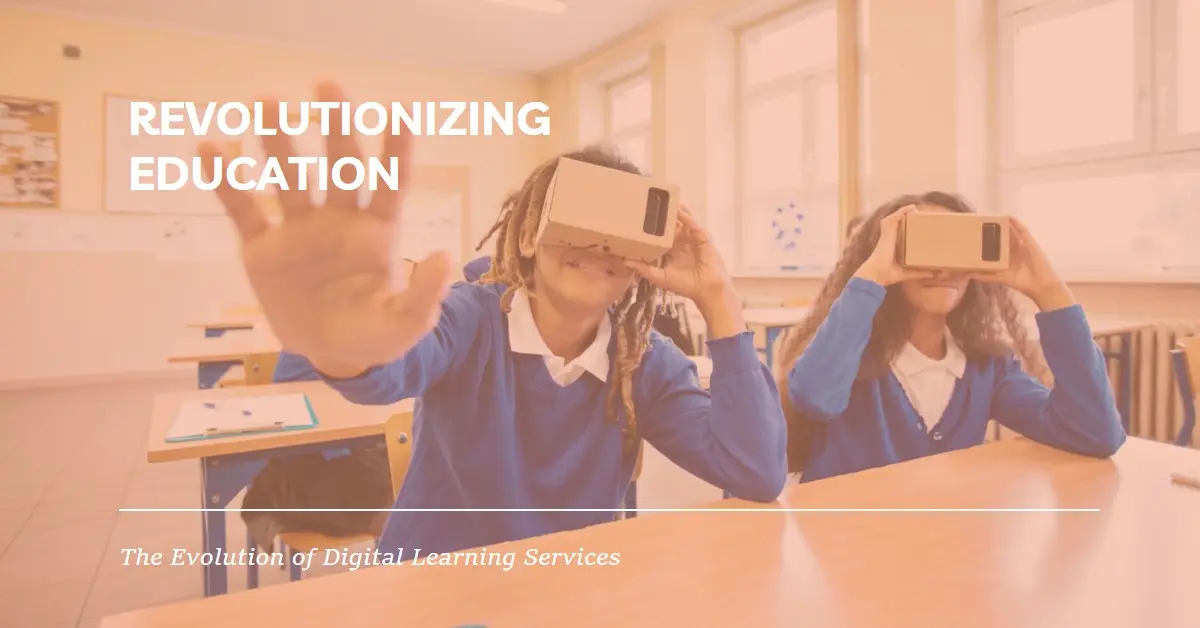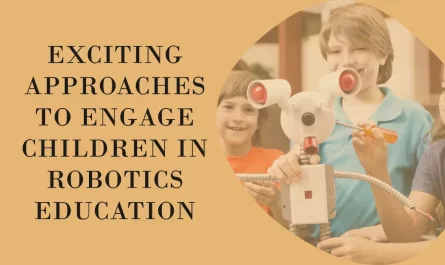Within the last few decades, quick improvement and a combination of online learning services have caused a sensational move in education. the developing request for personal, adaptable, and straightforward instruction. For the reason of securing and sharing information, opens up an advanced plausibility. Thanks to digital learning services, which have expanded learning interactivity, engagement, and consideration, these solutions have changed the instructive worldview. This write-up digs deep into the role of learning solutions based on modern technology and its evolution in the modern education system.
What are digital learning services?
These dedicated solutions focus on imparting learning outside the traditional classroom settings. These cover use of the digital technologies to deliver educational content, offer assessment and feedback, and facilitate smooth communication and collaboration.
The key components of a digital learning management system are:
- Virtual classrooms
These offer virtual platforms for students to interact, share learning, and collaborate on different projects easily.
- Digital libraries
These offer anytime and anywhere access to the educational content to different students.
- Simulations
These engage students through interactive and immersive experiences.
- Adaptive learning
It covers the use of data analytics to offer personalized learning experiences.
- Microlearning
The digital learning providers focus on using microlearning platforms that deliver bite-sized learning modules for quick and easy consumption by students.
- Online courses
These courses cover different academic topics and extend to practical skills.
- Learning Management System (LMS)
These are single platforms for managing learning materials, assessments, assignments, and discussions.
- Educational apps
The leading educational applications offer interactive and engaging methods for learning different subjects.
- Video lectures
These offer educational videos on different topics for detailed demonstrations and explanations.
- Online tutoring
These are the dedicated systems connecting students with tutors for personalized one-to-one teaching and student support.
The Early Days: The Web and E-Learning
The start of digital learning services dates back to the early days of the internet. In the 1990s, the advancement of e-learning marked the beginning of online instruction. It was characterized by fundamental text-based courses passed on through the net.
Even though these early stages were simple, centering basically on the elemental transport of content, they laid the premise for the progressed e-learning situations of these days. One of the initiating exercises was the Massachusetts Institute of Technology’s (MIT) OpenCourseWare extension, implemented in 2001.
This made course materials for for all intents and purposes all of MIT’s classes wholeheartedly open online. It democratized education and outlined the internet’s potential as an around-the-world learning instrument.
The Rise of Learning Management Systems (LMS)
As web availability and innovation progressed, Learning Management Systems (LMS) developed as a noteworthy advancement in computerized learning. These stages became essential for instructive associations transitioning to computerized plans.
LMSs’ key advantage was their capacity to centralize educator resources, giving a solid learning inclusion over particular courses and associations. They have enabled the affiliation of blended learning models, where standard in individual instruction is supplemented by online components.
Hence, the digital learning management system uses learning management systems to offer a common platform to students, parents, and teachers.
The Versatile Learning
The development of smartphones and tablets has changed computerized learning, allowing understudies to get to educational content anytime, anyplace. Portable learning, or m-learning, has made learning more versatile and accessible.
Apps like Duolingo for language learning and Coursera for higher education courses speak to versatile platforms’ power to communicate high-quality educator content on the go.
M-learning supports microlearning, where teacher content is passed on in small, sensible chunks that are less complex to prepare. Hence, many digital learning providers adopt this approach alters well with cutting-edge learners’ dynamic ways of life and brief thought ranges, exacerbated by the progressed age.
MOOCs: Massive Open Online Courses
One of the first transformative headways in digital learning services has been the rise of Massive Open Online Courses (MOOCs). Stages like Coursera, edX, and Udacity have made high-quality instruction from the leading colleges available to anyone with an internet affiliation.
MOOCs offer an unending cluster of courses, from computer science and planning to humanities and social sciences. They give them frequently for complimentary or at inside and out decreased costs compared to routine college instructive costs.
MOOCs have democratized education on a marvelous scale, breaking down geographical, financial, and social obstacles. They offer a degree of flexibility and self-pacing that routine classroom settings cannot facilitate, catering to profoundly established learners and specialists looking to upskill or reskill.
MOOCs have energized the headway of learning communities where understudies can collaborate, share contemplations, and support each other. Hence, promising inclusivity and diversity in education.
Virtual and Augmented Reality in Education
The wildernesses of progressed learning are being pushed by Virtual Reality (VR) and Augmented Reality (AR) development. Virtual reality can make an immersive learning encounter that reproduces genuine world experiences, giving hands-on preparation in a controlled and secure environment.
For occasion, restorative understudies can utilize a virtual working room to hone surgical methods, and history researchers may think about old civilizations through VR reproduction. Virtual reality offers the right bridge to bring students back to the past or offer real-time views of the places while staying in the comfort of their current location only.
Augmented reality improves the genuine world environment with progressed overlays and gives pertinent information and clever experiences. For example, to illustrate complex concepts such as atomic structures or topography in a natural way for the reason of giving maps and data overlays, Augmented Reality can be utilized inside science instruction.
These innovations provide an opportunity for experiential learning in the digital learning management system to progress the understanding and upkeep of information.
The Role of Information Analytics
Information analytics is noteworthy inside the headway of advanced digital learning providers. By examining the huge entirety of data delivered by students intuitively with progressed stages, instructors and educators can choose imperative bits of information for learning practices and results.
This data-driven approach licenses for more taught decision-making, centred on mediations, and a determined altar of instructive content and conveyance techniques.
Learning analytics can help to recognize at-risk understudies early, customize learning experiences, and allow helpful and relevant input. It also engages instructors to explore and refine different guideline procedures, in the long run driving to more reasonable and viable learning.
For instance, prescient analytics can gauge understudy execution and recommend customized learning ways, ensuring that each understudy gets the support they need to be compelled to succeed.
Digital Learning Services- Challenges and Future Orientation
Whereas digital learning services have brought different benefits, they too show a few challenges. Issues such as computerized confinement, where unequal innovation can compound instructive lopsided characteristics.
Ensuring data assurance and security to boot is crucial as educational stages collect and look at perpetual entities of personal data. Educational associations must embrace robust information confirmation measures to guard understudy information and develop belief.
There’s a got to ceaselessly survey the quality and reasonability of progressed learning tools to ensure they meet instructive measures and move forward with learning results. Joining these propels into routine educational systems requires cautious organizing to ensure smooth moves and positive impacts.
Final Thoughts
The advancement of digital learning services has in a general sense changed the educational scene, opening knowledge and openings for millions around the world. From the humble beginnings of e-learning to today’s advanced, intuitive, and customized encounters, computerized learning proceeds to thrust the boundaries of what is conceivable in education.
As innovation progresses, so will how we learn, making education more available, locked in, and viable for all. By tending to the challenges and grasping the openings displayed by advanced learning, we can guarantee that the longer term of education is comprehensive and inventive.



